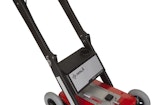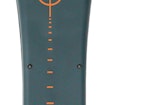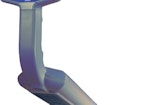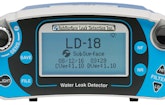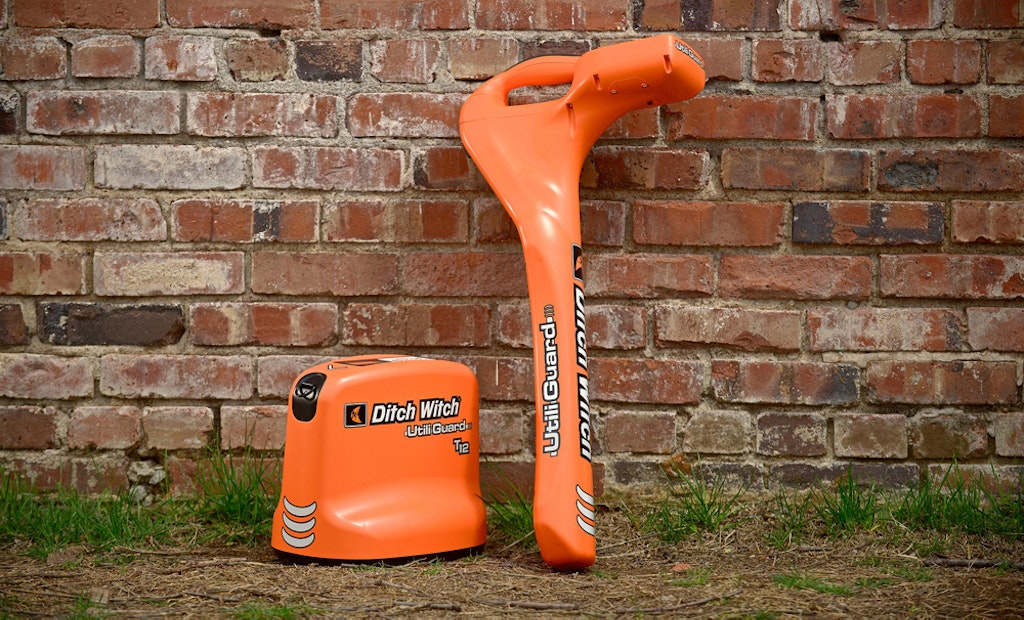Interested in Location/Detection?
Get Location/Detection articles, news and videos right in your inbox! Sign up now.
Location/Detection + Get AlertsPrecise locating — whether it’s buried utilities, cable, pipe, cameras or sondes — will safeguard against costly mistakes. Today’s equipment simplifies locating while ensuring high accuracy.
Whether you’re mapping sewer and water pipes and other buried infrastructure, or trying to determine if a line runs under a driveway or leads to an easement, mastering the art of locating will increase productivity and improve profitability. It's best to do a few practice runs on different types of lines and pipe so you're not fumbling with all the features out on a job.
Charlie Hall, owner of Mr. Rooter of Southern Colorado, added locating to his menu of services a few years ago and has never looked back.
“We are getting 100 calls a week, and in many instances we need to find the sewer lines,” Hall says. “Line locating is an essential part of what we do.”
“We had an old locator and didn’t know how to use it,” he continues. “I bought a brand new piece of equipment and of course no one could run it properly. We were learning as we went along. It would have been comical, if it wasn’t so important.”
After receiving training from a manufacturer representative on the new locator, Hall and his technicians were able to start successfully locating.
“It took ‘hands on’ to get us started,” Hall says. “That equipment is bullet proof. It doesn’t need calibration. You can locate your lines.”
Here are some tips and product recommendations to streamline your locating jobs.
1. Ask the locals
You need to know where a lateral connects to the main line to estimate a residential job, so you ask yourself:
- How long and how deep is the property line connection?
- Where should a repair begin and end?
- Are there any obstacles to trenching, such as driveways and sidewalks?
Without this information, you’re just guessing where a line is located. For locating underground utility or sewer lines, call the local municipality to get some general measurements, such as distances from manholes, to better pinpoint the line.
If you have information to locate the main sewer, for instance, you’ll be able to efficiently locate where the lateral meets the main line. And you’ll take out all the guesswork, which the homeowner will appreciate.
2. Adjust the frequency
You have a general idea of where to begin. Now it’s time to use your equipment correctly. Be sure you’re using the proper frequency to achieve the most accurate locating. Many locators include preset frequencies to better guide your search efforts.
You also can follow some basic principles if your locator does not include frequency guides. Use the lowest frequencies to detect smaller pipes, and the higher frequencies for larger ones. Selecting the proper frequency before you begin a locate will guarantee a more efficient locating job.
Remember, the quicker you complete a locate, the sooner you can move on to excavation or inspection.
3. Know before you dig
When you have the best equipment, you get the best results. And doing any trenching or excavation without locating necessary underground infrastructure could cost you — and the homeowner — a pretty penny.
“Digging without knowing where you are going is like running a business without a plan,” Hall says. “You can overcome this with good, solid equipment. We always map the entire line from the house to the main.”
When locating a sewer line, several things come into play for Hall’s company. “When we start an excavation, we need all utility lines located,” he says. “If we miss a line, we could conceivably dig up a driveway, a curb, a gutter, that does not need to be dug up. You need to have confidence in your equipment. A mistake could cost $10,000.”
The right equipment, along with proper training and experience will help you minimize guesswork and wasted effort.
Check out these best-in-class products to expand your locating arsenal:
Pipe locators
- The Gen-Eye Hot-Spot pipe locator from General Pipe Cleaners features an easy-to-see auto backlit LCD display, with a Null icon that indicates the pipe location and camera icon that confirms you’re over the target. Rated at IP65, it’s dust and dirt-proof and water-resistant. It has passed the 1-meter drop test while the screen passed the 18-inch steel ball drop test.
- The 8873 cable, pipe, camera and sonde locator from RYCOM Instruments Inc. offers two versions of the dual active frequency packages — 512 Hz and 82 kHz or 512 Hz and 33 kHz — ensuring the ability to track any manufacturer’s camera or sonde system operating on 512 Hz. They can be used to locate pinches and blocks in nonpressurized conduits and pipes, as sonde frequencies are matched to the frequency of the receiver.
Sonde locators
- The LineFinder LF2200 from Prototek locates any frequency sonde or transmitter box between 16 Hz and 100 kHz using its frequency-sniffing feature. It features preset support of 16 Hz (steel or ductile iron as well as cast-iron and nonmetallic), 512 Hz (cast-iron or nonmetallic) and 8 kHz (nonmetallic only) sondes. It traces underground metallic lines at four built-in industry-standard frequencies using an external transmitter box; other frequencies can be sniffed as well.
Utility line locators
- The AML (All Materials Locator) from SubSurface Instruments utilizes high-frequency radio waves to penetrate the ground and detect buried PVC pipes, septic lines, water mains, cables, wires and any other conductive or non-conductive material. It has three sensitivity settings for varying conditions, LED target indicators and a laser target indicator to pinpoint subsurface objects.
- The Easy Locator HDR from MALA GeoScience USA features a single-frequency transducer that allows the detection and imaging of targets from small near-surface service connections to deeper larger-transmission facilities. Users can zoom in for visualization of small near-surface targets or out for maximum range to view the deepest targets.
- The UtiliGuard utility locating system from Ditch Witch features ambient interference measurement (AIM) that automatically scans the surrounding area for noise and recommends the best frequency among its 70 options. It measures distances (depth) both horizontally and vertically to the utility to help users make more accurate locates of obstructed utilities.

